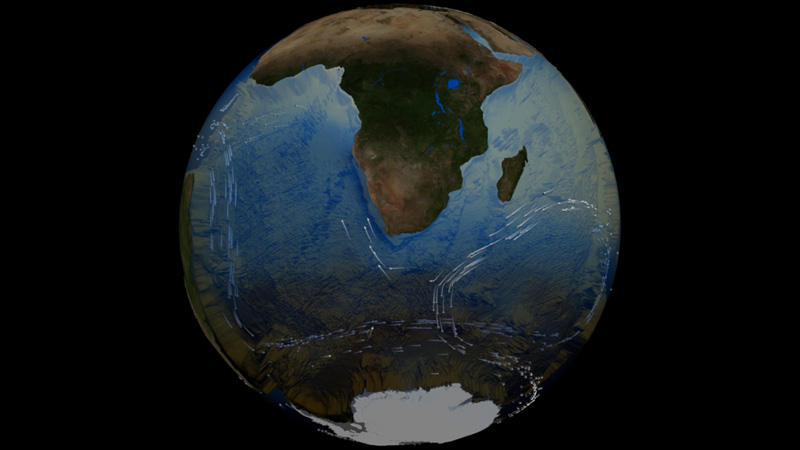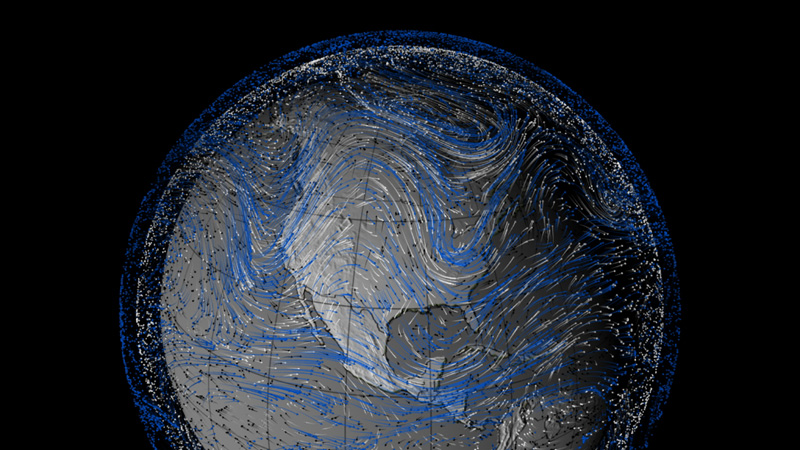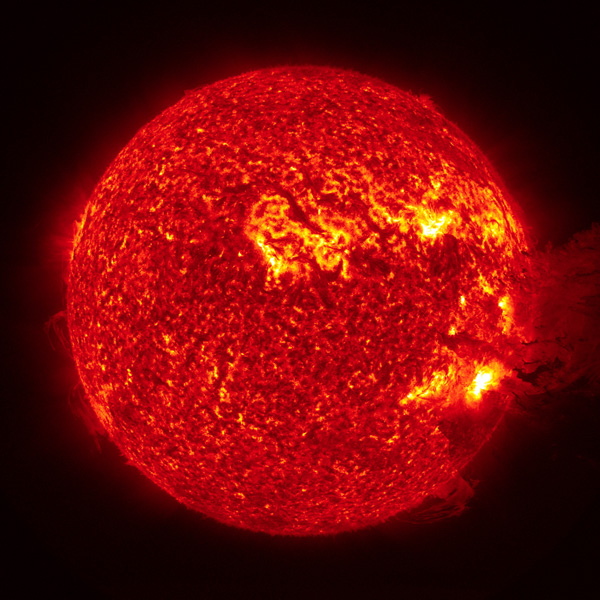Large scale movement of air masses is another way of talking about atmospheric circulation. It not only transports and redistributes gasses and particles in the atmosphere, but it also redistributes heat. Atmospheric circulation is spectacularly complex. Many forces and features influence how the atmosphere moves. Generally speaking the atmosphere churns due to planetary rotation and differences in pressure among adjacent air masses.
Most of the driving force mixing Earth's atmosphere comes from convection. But just like in the oceans, there are multiple spatial dimensions through which the atmosphere moves. While warm and cold air move vertically, air also skids laterally because of the Earth's rotation. The Coriolis Force sends winds arcing away from the equator, too. What's more, air over different sections of the planet responds to measurably different zonal conditions. Scientists divide large atmospheric zones into what they call "cells", each propelling air in different ways. Pressure, moisture content, even surface features all contribute.
The circulation patterns presented in LOOP come from a number of sources. In an early sequence we show generalized circulation patterns for an artificial planet, visualized in synthetic data. It would be glib to say we just made it up, but there's a grain of truth to the charge of fabrication. While the "idealized planet" sequence is neither a formal data visualization nor a purely artistic animation, this compelling scene allows us to consider general principals of how air moves.
Later in the film, the visualization team depicts global atmospheric circulation from a MERRA (Modern Era Retrospective-analysis for Research and Applications) climate model that is constantly updated by ingesting real data. MERRA data is the stuff of simulated Earths built in supercomputers. The underlying real data in the MERRA model enables simulation of real world conditions, empowering scientists to experiment with the entire Earth in their laboratory.








